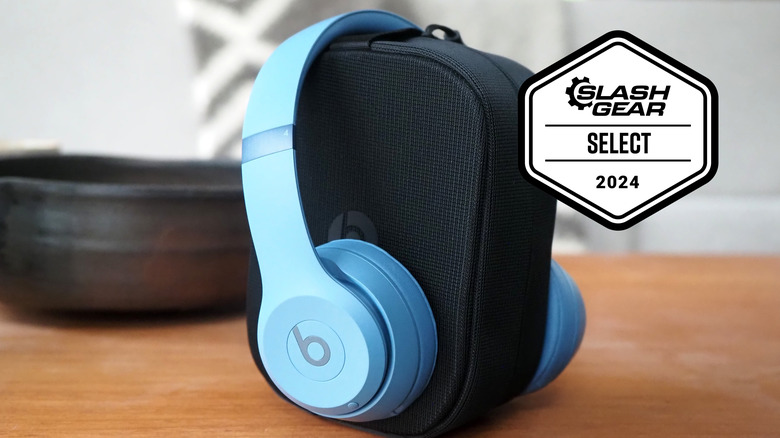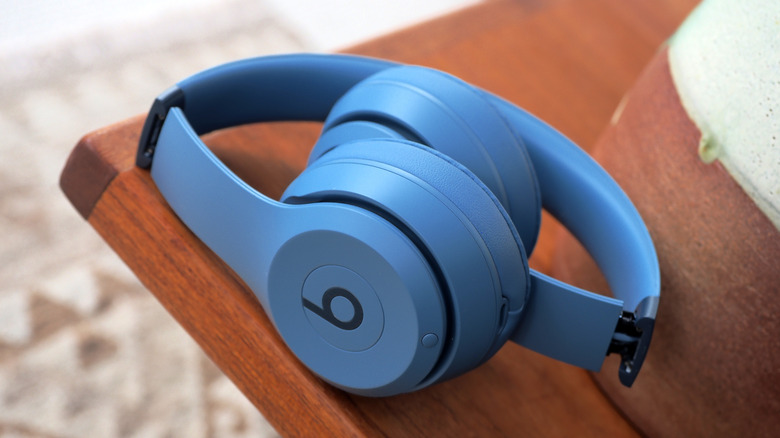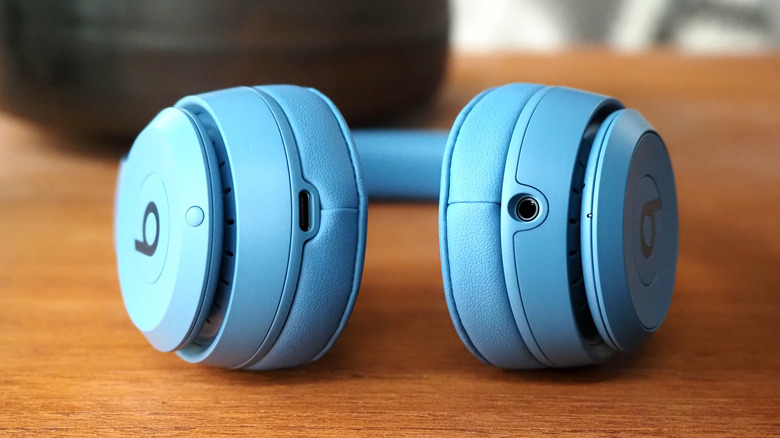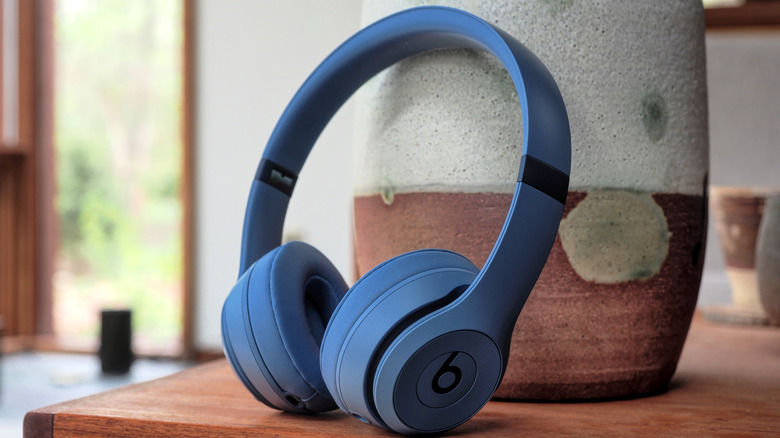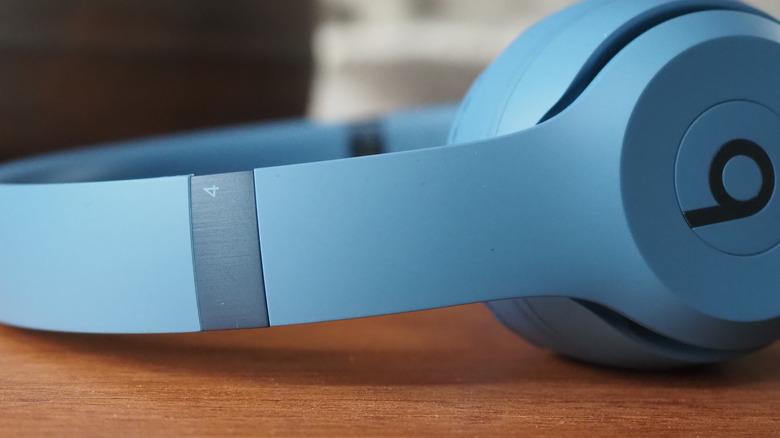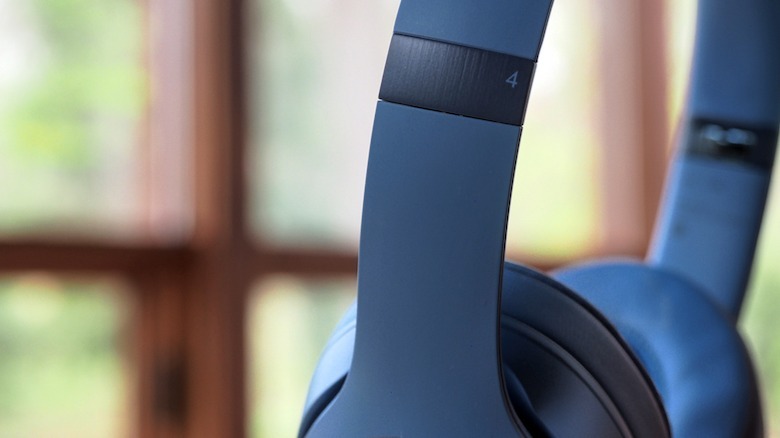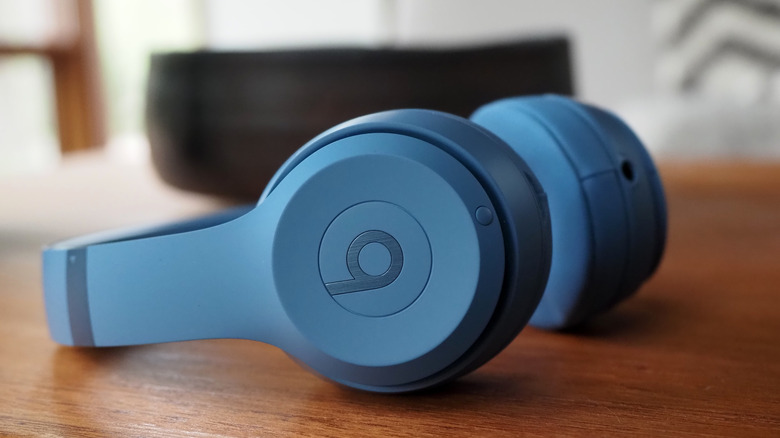Beats Solo 4 Review: USB-C And More Battery, But No Noise Cancelling Is A Miss
- Comfortable, stylish design folds for easy transport
- Balanced audio profile
- Works equally well with iPhone and Android
- Significant improvement in battery life
- No active noise cancellation (ANC)
- No waterproofing
- No auto-pause when you take the Solo 4 off
Back when Apple bought Beats for a whopping $3 billion in 2014, many assumed the bass-loving audio brand would be thoroughly absorbed into its new owner. Instead, Beats has carved out an unexpectedly distinct niche within its parent: cherry-picking the best of Apple's tech, but refusing to commit to the iPhone-is-everything ethos. That's a strategy which shows up loud and clear in the company's latest headphones, the Beats Solo 4.
It's fair to say the stakes are high for the Solo 4. For a start, they're the newest iteration of some of Beats' most popular headphones, with over 40 million examples — across all generations — sold so far. At the same time, the wireless headphone segment has expanded massively over the past few years, with new brands and old wading in, and prices plummeting.
For the Beats Solo 4, the price is unchanged: they'll be $199.99 when the fourth-generation headphones arrive on shelves come May 2nd, 2024.
Classier and more comfortable headphones
Long gone are the days when the Solo range was glossy and plasticky. For the Solo 4, the plastic remains but its matte finish — and a pleasing array of tasteful colors, like Cloud Pink, Matte Black, and this handsome Slate Blue — and subtle metal accents elevate Beats' cheapest headphones even further. A subtle "4" on the right arm-cap, and of course the stylized "b" logo on the ear cups, keep things looking classy.
It's a functional design, too. The headphones fold, with a reassuring click and flex-free metal arm extenders, and though Beats supplies a black nylon pouch (with space for the bundled 3.5mm audio cable and a USB-C power/audio cable) I'd have few qualms about throwing the Solo 4 in the top of my backpack as-is.
Weight is almost unchanged — up two grams, to 217g — but the ear cup cushioning is different. Beats claims an uptick in both comfort and durability. As before, the cups sit on top of the ears rather than surrounding them: personally, I prefer the latter, but the way the Solo 4 ear cups can tilt in all directions reduced any discomfort. The downside might be how well they grip your head if you're exercising. An aggressive head-shake made them shift a little, but runners could find the Solo 4 slipping off at a more dramatic jog, and there's no official IPX waterproofing rating.
Longer battery life and more flexible connectivity
While the aesthetic changes may be a message, not a revolution, there's far more going on inside than you might expect. Arguably the headline figure is the uptick in battery life: up to 50 hours, versus the 40 hours of the third-gen headphones. 10 minutes plugged into a charger is good enough for up to five hours of playback (the Solo 3 promised three hours after five minutes), but even if the Solo 4 are completely dead, you can use the 3.5mm cable for battery-free audio, including support for high-res lossless.
That's great, and so is high-resolution USB-C audio support, one of the benefits from the switch from microUSB on the old headphones. Plug the Solo 4 into a MacBook with the included USB-C cable, for example, and that one cord will handle charging and audio.
I suspect, though, that most people will see the Solo 4 as the ideal counterpart to their smartphone, and there both iPhone and Android users are catered for (integrated into the iOS settings, or via the Beats Android app). Beats' proprietary chipset — as opposed to the chips in Apple's AirPods — supports not only one-touch pairing, iCloud pairing sync, Audio Sharing, always-on Siri responses, and personalized spatial audio on Apple devices with dynamic head-tracking, but Android's easy pairing too. In fact, Android users also get useful multipoint Bluetooth for simultaneous connections with multiple devices, something iPhone users miss out on.
A bright soundstage with a bass surprise
The extra battery life isn't the only change inside: Beats is also using upgraded 40mm transducers, which it says deliver less distortion. There's certainly an agreeable clarity to the Solo 4 audio profile, with spacious soundstage even before you get to Spatial Audio (which is basically personal surround sound: imagine being enclosed by 64 different speakers).
The treble and midrange are sharp and piping, flattering vocals and string instruments alike. It's all very balanced, though — ironic, given Beats' lingering reputation for being bass-centric — I wouldn't argue with more low-end from the Solo 4. It's not weak, but it lacks that outright, brain-wobbling thump that makes the bassline of genres like reggaeton and trap so addictive. Unfortunately there's no way to adjust the Solo 4's EQ settings.
For voice calls, Beats says there's upgraded beam-forming microphones with a better noise-to-signal ratio and new processing algorithms. Certainly, callers didn't complain about clarity in FaceTime. The multi-function button on the left ear cup handles play/pause, track skipping, and triggering a voice assistant, while tapping above or below it adjusts volume. That's much preferable to having to use Siri to change how loud the headphones are.
Solo life misses out on some niceties
So far, so Solo, but roam out into the wider world and you might find some of Beats' priorities less appealing. There's no auto-pause, for example — the Solo 4 won't automatically halt playback when you take the headphones off to chat with someone or place your coffee order, or resume it when you put them back on again — and it seems a shame that the "fuel gauge" of the Solo 3 hasn't been carried across. The old headphones had four LEDs to show battery status.
The most obvious omission, though, is active noise cancellation (ANC), which remains the preserve of the Beats Studio Pro ($349.99) in the company's headphones line-up. The passive isolation of the Solo 4 ear cups is fine, for what it is, but those with public transit commutes or who frequently fly may want to look elsewhere to actual ANC.
Beats Solo 4 Verdict
On the one hand, the Solo 4 are demonstrably better headphones than their predecessors, with improved battery life and flexibility, all without changing the price tag. They're comfortable to wear, seem sturdy, and strike a nice balance between distinct aesthetics without straying into ostentation. Oh, and the fact that they sound pretty darn good — crisp, clear, and with the additional benefit of Spatial Audio support — is the cherry on the proverbial cake.
At the same time, though, the headphones market is ever-more competitive. For the same price as the Solo 4 you can have Sony's Ult Wear, for example: not only do they allow you to crank up the bass (to, admittedly, levels that only the most low-end addicted might enjoy) but they have active noise cancellation and match (with ANC off) the battery life of the Beats.
Beats certainly deserves credit for its best-of-both-worlds approach to iPhone and Android support, and the Solo 4 are stylish and very listenable. I suspect road warriors will still want to look elsewhere, until ANC graduates down through Beats' line-up. The biggest takeaway, though, is that you should audition headphones rather than go by reputation before you open your wallet, to ensure Beats' sound profile of choice matches your ears' preference.
